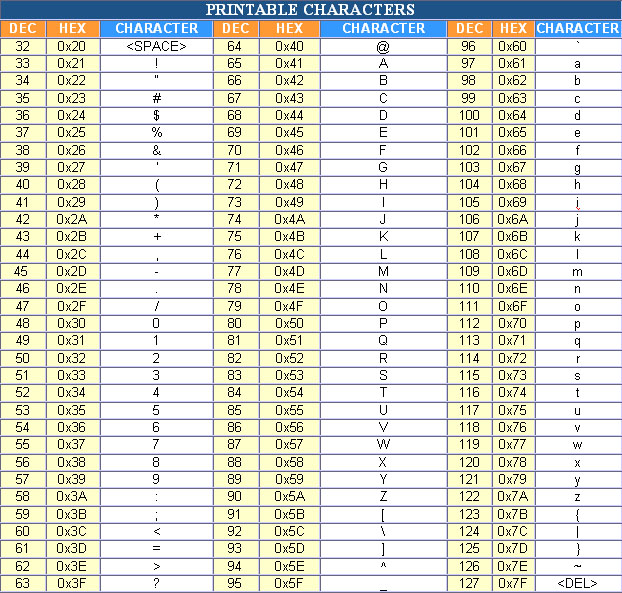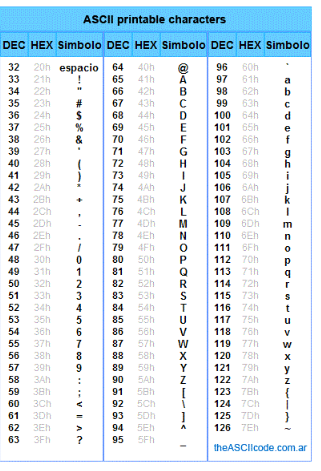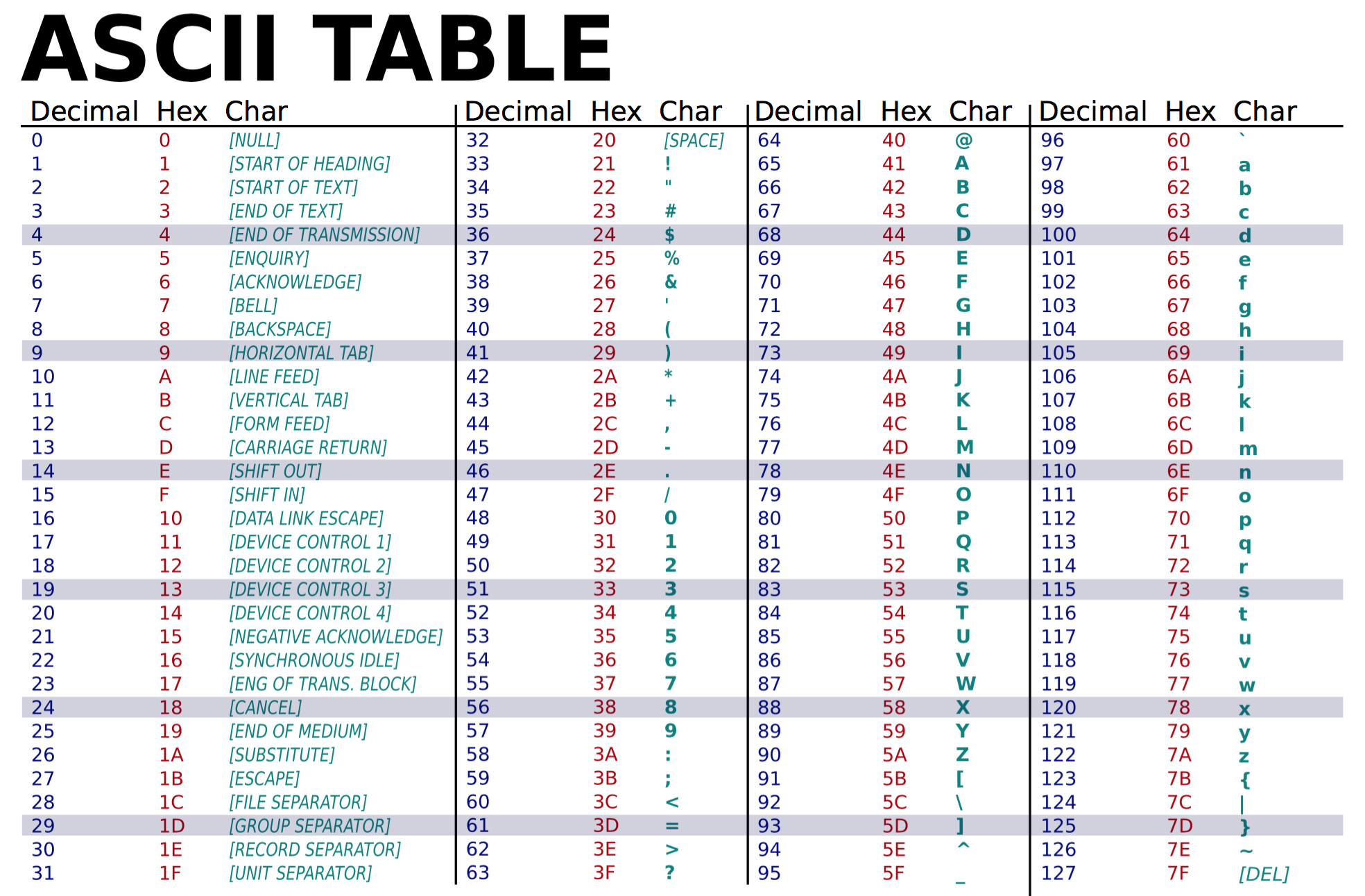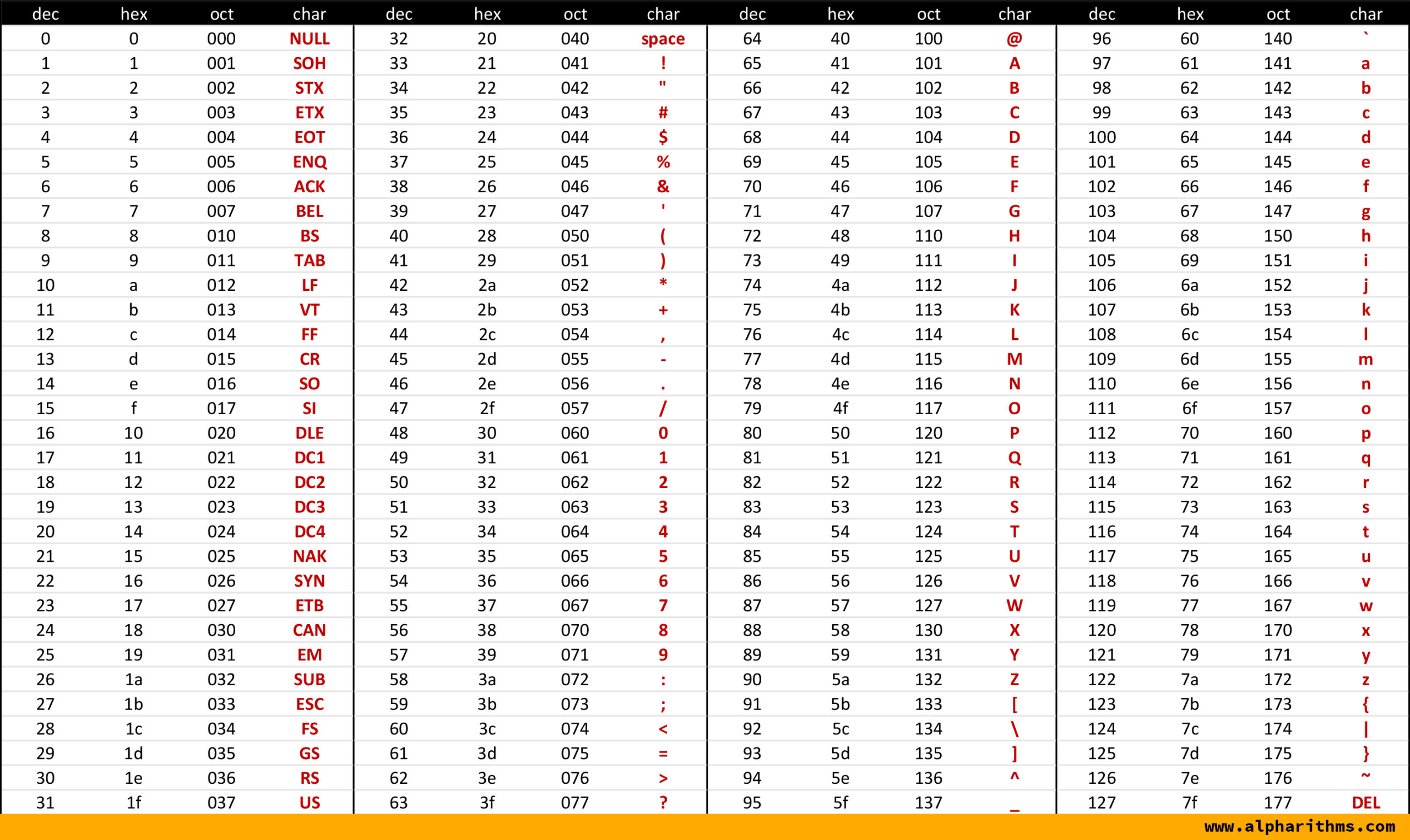ASCII (American Standard Code for Information Interchange) is a character encoding standard that represents text in computers and other devices. It assigns unique numeric codes to various characters, including letters, numbers, punctuation marks, and control characters. ASCII has been widely used and is still relevant in many modern computing systems.
An ASCII table provides a comprehensive overview of all the ASCII characters and their respective codes. It serves as a useful reference for understanding and working with ASCII-encoded text. The table organizes characters into different categories, such as control characters, printable characters, letters, numbers, and symbols. Each character is associated with a unique code that can be used to represent it in computer systems.
Among the hundreds of ASCII characters, some are more commonly used than others. The image above shows a list of the 95 most common ASCII characters. These include letters, digits, punctuation marks, and other frequently used symbols. Being familiar with these characters is essential for anyone working with ASCII-encoded text, as they form the foundation of many digital communications and data representations.
Printable characters are those that can be displayed or printed directly, and they play a crucial role in representing information using ASCII. The image above provides a visual representation of the printable characters in the ASCII set, along with their respective binary values. These characters include alphabets, numbers, symbols, and certain control characters that have a visual representation, such as new line and space. Understanding the binary values associated with each character enables efficient storage and communication of text data.
Character encoding is the process of assigning numeric codes to characters for representation in computer systems. ASCII is one such character encoding, but there are others like Unicode that extend the range and capabilities of character representation. The ASCII table depicted above demonstrates how different characters are encoded and can be used to understand encoding principles.
ASCII characters can sometimes be used creatively to form visually interesting shapes and images. The image above displays an example of sassy ASCII printable characters. While their artistic value is subjective, it showcases the versatility and expressive potential of ASCII art. Artists and enthusiasts use these characters to create unique designs, logos, and even animations.
Not all ASCII characters are printable or have visual representations. There is a range of non-printable control characters, including those for carriage return, line feed, backspace, and others. These characters perform various control functions within a computer system and are often used for formatting and communication purposes. The PDF document accessible from the image above provides a detailed list of non-printable ASCII characters and their respective codes.
For developers and programmers, an ASCII table serves as a valuable tool for working with text-based data. The image above shares coding tips related to the ASCII table, providing insights on how to utilize and manipulate ASCII-encoded information effectively. By leveraging these tips, developers can efficiently process and manipulate ASCII characters in their programs.
Studying ASCII characters is an integral part of computer science education at the secondary level. The image above showcases the representation of characters in ASCII, highlighting their corresponding codes and visual symbols. Understanding character representation in ASCII is essential for students pursuing computer science as it provides a foundation for more advanced topics related to data storage, manipulation, and communication.
While ASCII primarily focuses on encoding English characters and symbols, there are variations and extensions like Extended ASCII and Unicode that accommodate non-English languages and characters. The image above represents a glimpse of characters that fall beyond the traditional ASCII range. These extended characters are used in various languages worldwide and are critical for multilingual computing and communication. Unicode, for example, encompasses a vast range of characters from different scripts and writing systems.
For quick reference and guidance on ASCII characters, an ASCII table such as the one shown above can be beneficial. It includes the printable characters and their corresponding decimal, hexadecimal, and binary codes. Such tables aid developers, researchers, and enthusiasts in identifying and utilizing specific characters in their projects, ensuring accuracy and consistency across different systems and platforms.
ASCII, with its rich set of characters and codes, continues to be an important aspect of computer systems and programming. Understanding this encoding standard and the various characters it encompasses is foundational knowledge for anyone working with text-based information.
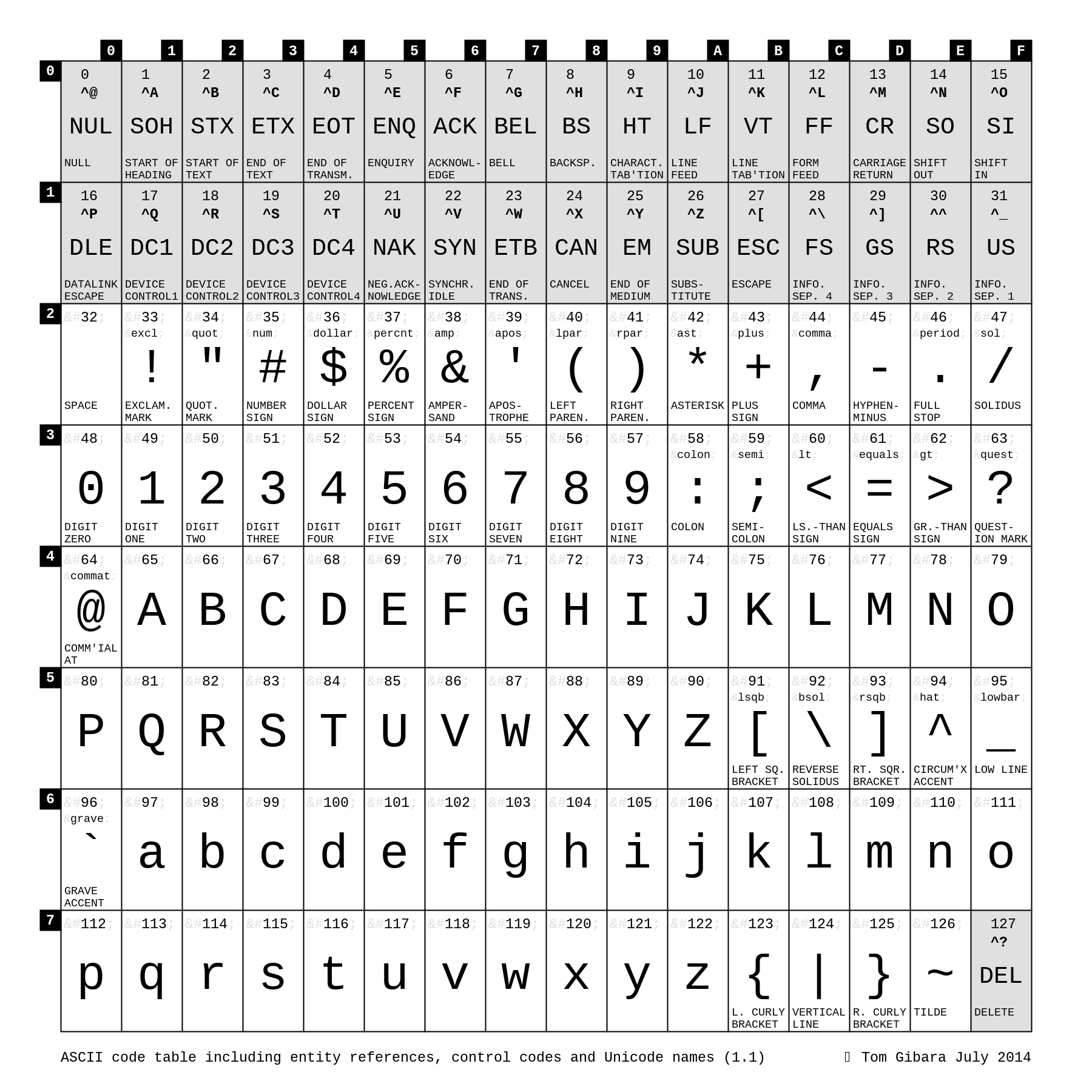



:max_bytes(150000):strip_icc()/ASCII-5bf37a8ec9e77c005108fa71.jpg)
